Burning Man is an annual art event held in the Black Rock Desert of Nevada, USA. Once a year, 80 000 people gather to create and then burn Black Rock City, a temporary metropolis dedicated to community, art, self-expression, and self-reliance. With Burning Man 2020 taking place in virtual format for the first time in its three-decade history because of the coronavirus pandemic, we recall the best installations of the last year’s festival.
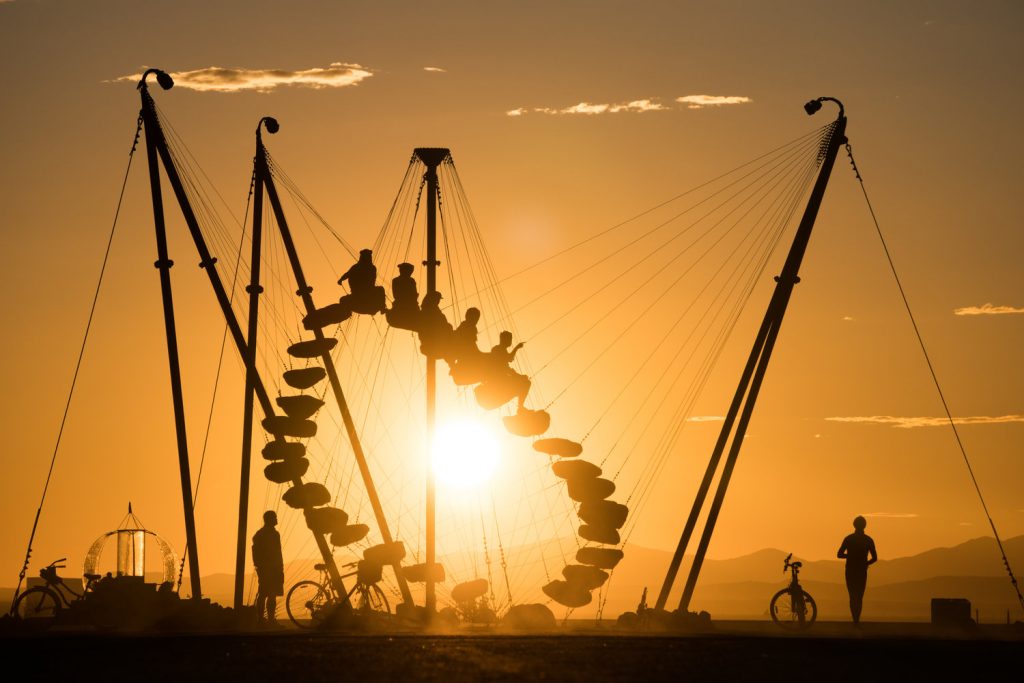


Andromeda Reimagined by Form4 Architecture (ph: Hannu Rytky; via)
In keeping with Burning Man 2019’s art theme of “Metamorphosis,” John Marx of San Francisco based practice Form4 Architecture (together with art collective Playa Muses) reinterpreted the classical patriarchal myth for a story of female empowerment. His intricate and luminous pavilion entitled ‘Andromeda Reimagined: a Sanctuary in Deep Playa’ challenged the tale of Andromeda, who was saved by Perseus from a death sentence before attaining celestial immortality as a constellation. In the reimagining, Andromeda — as a strong, independent woman — saved herself with the help of a supportive community.
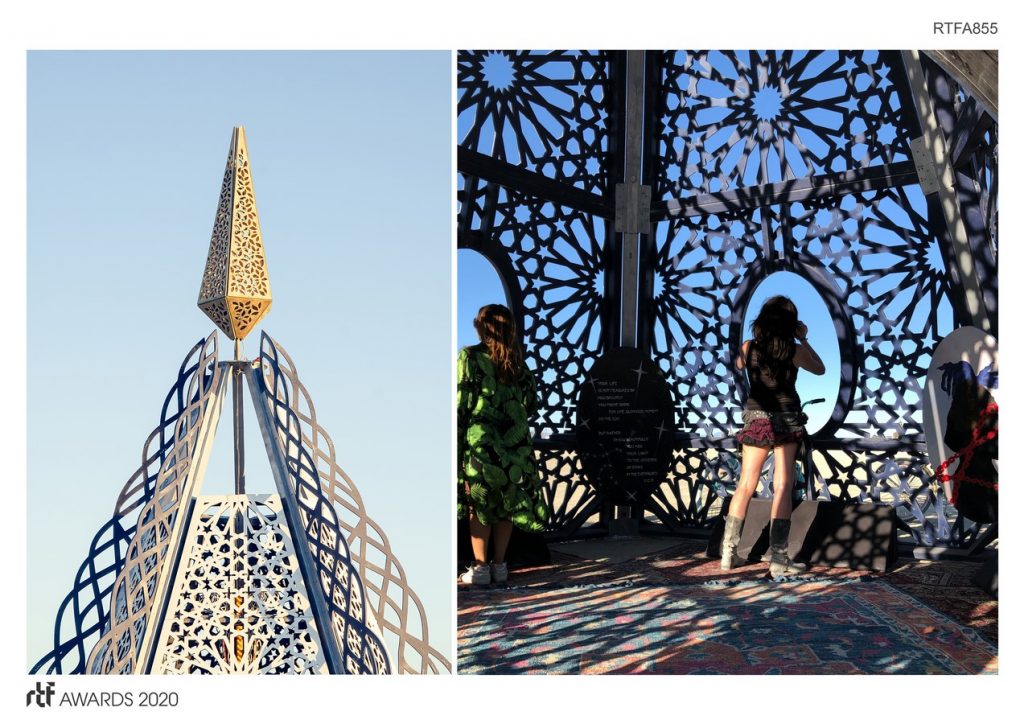
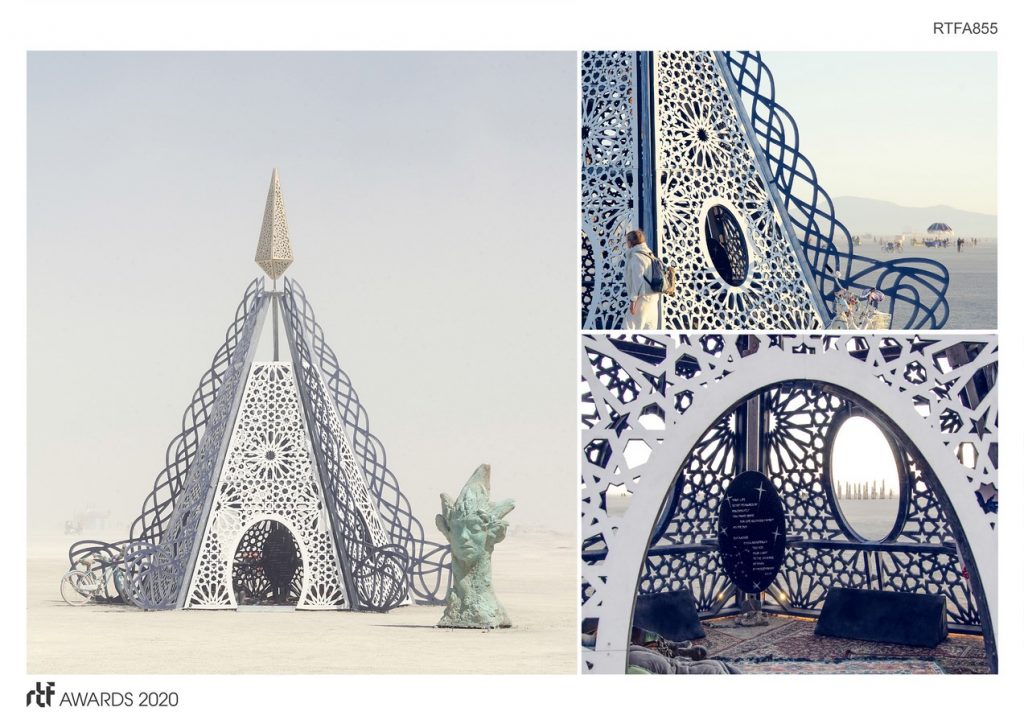
Andromeda Reimagined by Form4 Architecture (ph: Hannu Rytky & John Marx; via)
Relating to the infinite potential of the stars in the sky—specifically the Andromeda constellation, the walls of the five-sided pyramid boasted ornate CNC-cut patterns of star-shaped cutouts and dramatic swirls mimicking trajectories of the cosmos. When illuminated from within, the installation projected its whimsical light onto the nighttime desert floor.


Andromeda Reimagined by Form4 Architecture (ph: John Marx)
The plush interior featured four oval paintings depicting the reimagined narrative, and a fifth hanging panel displaying the structure’s thematic poem, “How Brightly.” An eight-foot-high concrete sculpture by Mischell Riley called “Freedom and Awaken” anchored the center. The visitors were encouraged to proclaim their own female heroes along the walls utilizing hanging markers.
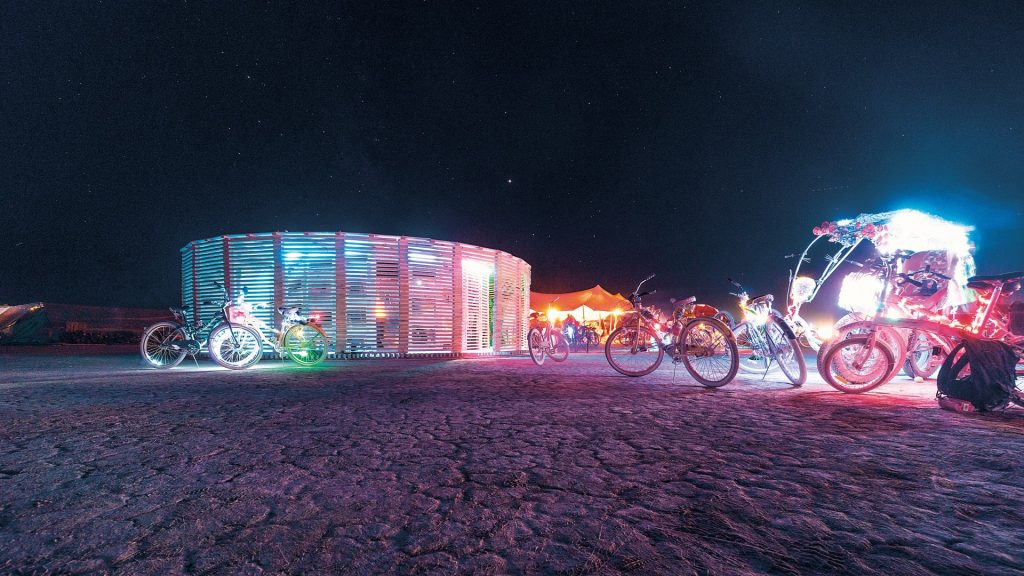
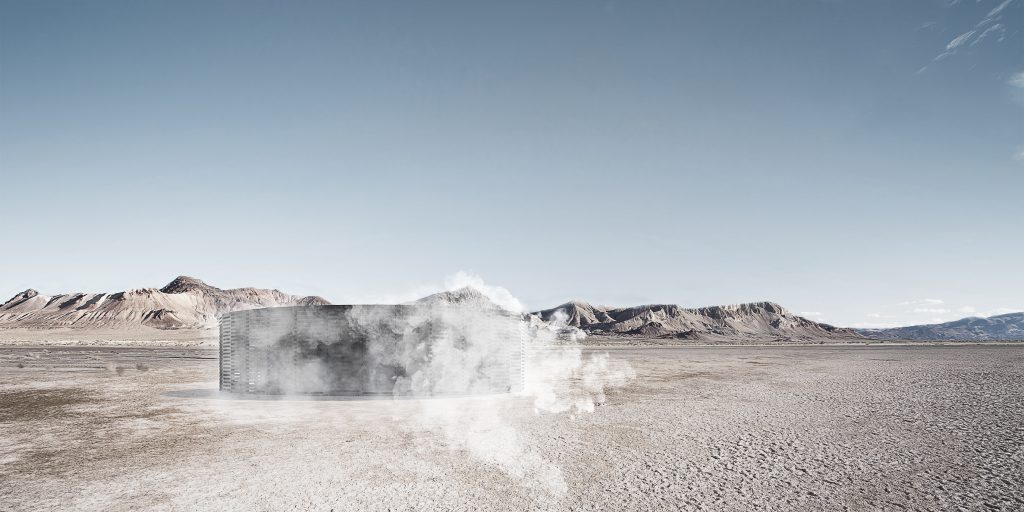
Burning Man Steam of Life by JKMM (ph: Hannu Rytky)
Finnish studio JKMM Architects teamed up with Finnish creative collaborative Sauna on Fire to bring the traditional Finnish sauna into the Nevada desert. The team was composed of an interdisciplinary group of artists, architects, thinkers, scholars and burners with an ambition and curiosity for introducing the essence of Finnish mindscape in the physical form of a sauna pavilion for the Burning Man society.

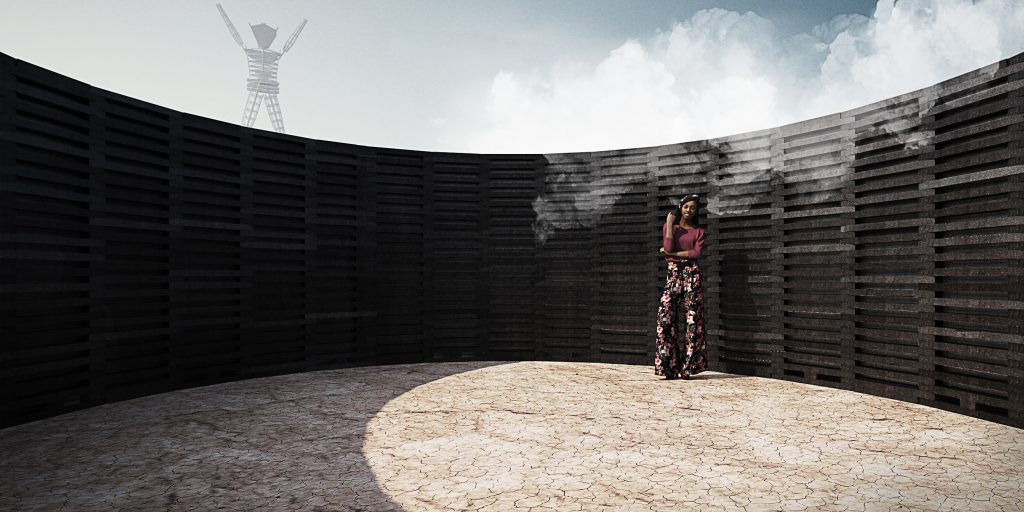
Burning Man Steam of Life by JKMM
In Finland, sauna has a long tradition of being a simple place for cleansing and regeneration – both physical and spiritual, which responds well to the theme of ‘Metamorphosis.’ “We also thought bringing a sauna into the desert was so mad that we had to do it,” adds the team.
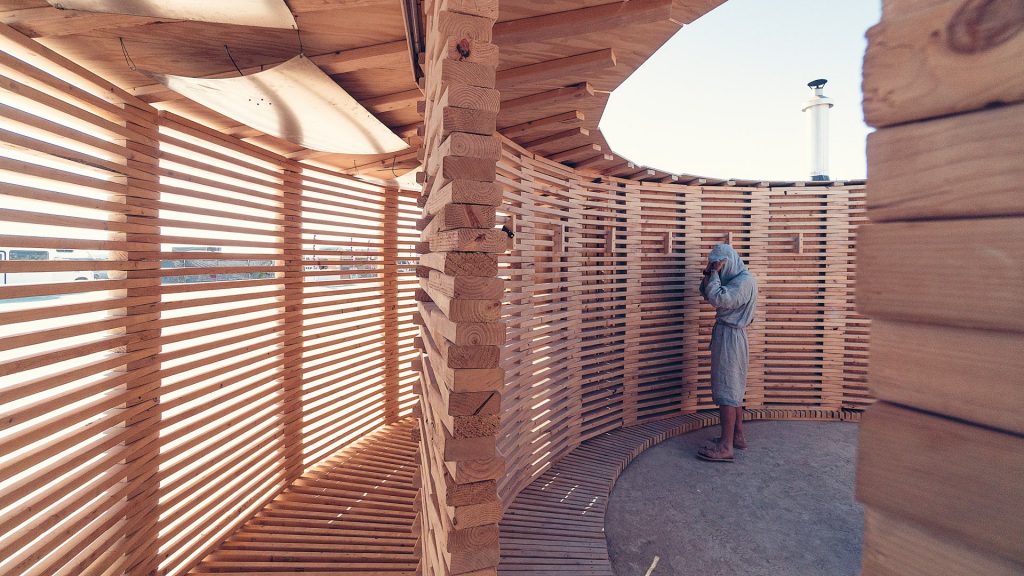

Burning Man Steam of Life by JKMM (ph: Hannu Rytky)
Called Steam of Life, the art installation encompassed a circular minimalistic pavilion built in wood, focused on embracing ambient natural light and shade. Timber slabs stacked on top of one another rounded the entire edifice, while two different sizes of plywood formed the ceilings, interior walls and sauna seating.


Burning Man Steam of Life by JKMM (ph: Hannu Rytky)
After cleansing, visitors were directed to a dimly lit space that opens to an atrium yard in the middle of the pavilion. This area was used as a shaded oasis for cooling down and meditative relaxing after the time spent in the steam room.
Designed to feel like a regenerative cycle, the sauna was visited by over 1000 attendees during the event.


Stone 27 by Benjamin Langholz (also header image)
An installation by Californian artist who lives and works in Berlin, Benjamin Langholz consisted of a circular staircase of stepping stones intended to provide a “shift into a new reality”. Named after the number of steps in the staircase, Stone 27 was the third project in the artist’s portfolio of “floating” stone installations.
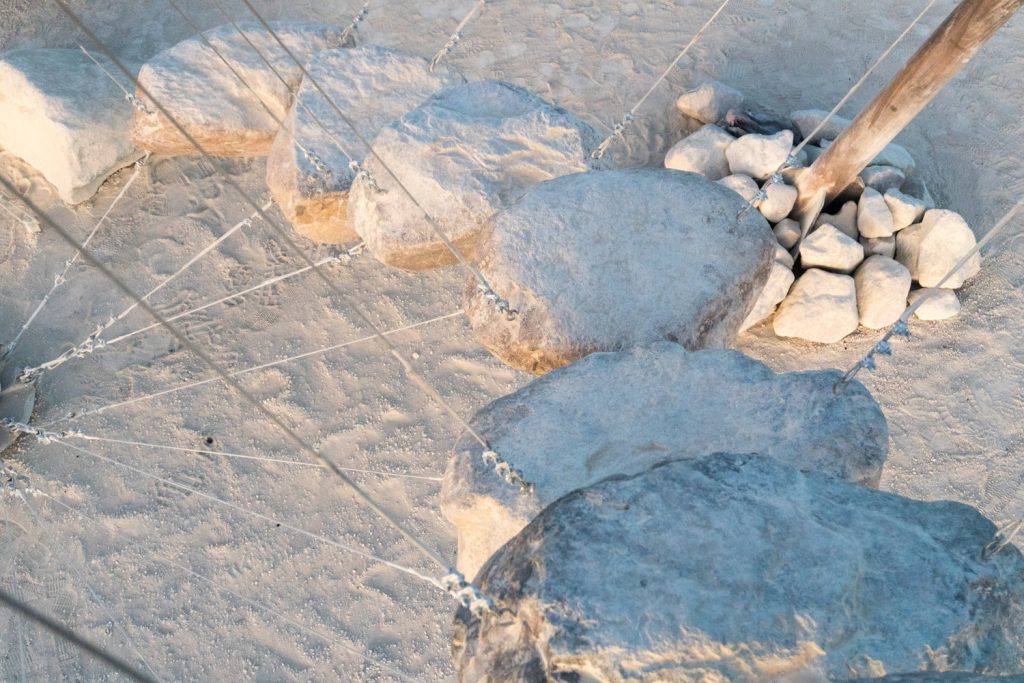

Stone 27 by Benjamin Langholz
Langholz arranged 27 basalt stones, each weighing over 450 kilograms, in a continuous ascending pathway, which measured seven metres above the ground at its highest point. According to the artists, the stones were placed with the optimum spacing for the climbers to have a pleasant ascend encapsulating a ‘natural high.’ The stones were sourced locally without disturbing the natural landscape of the Black Rock Mountain.
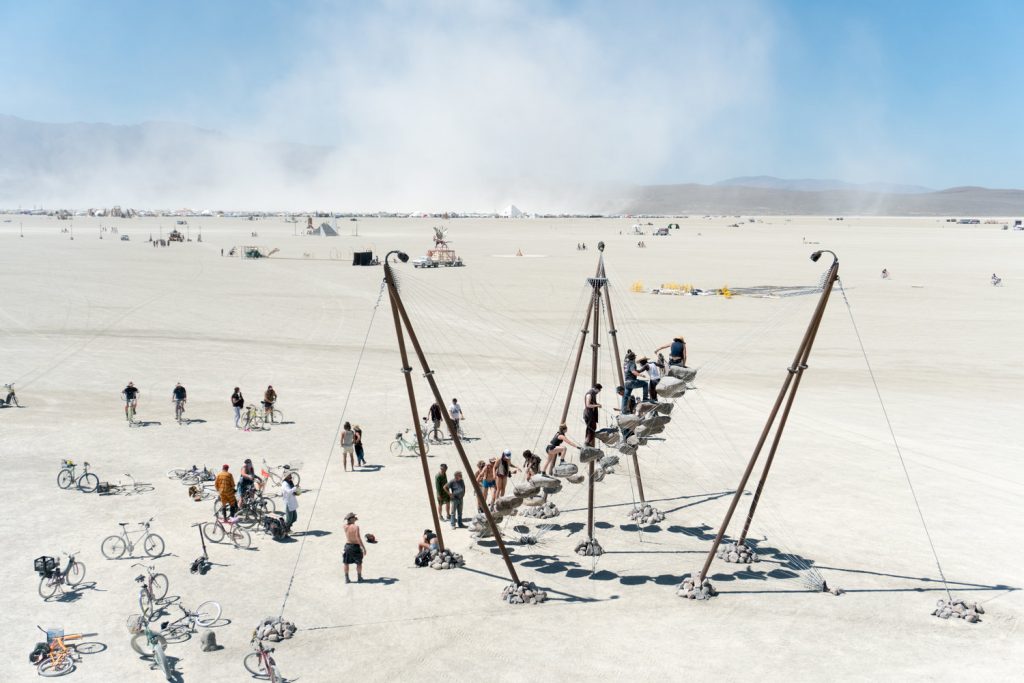
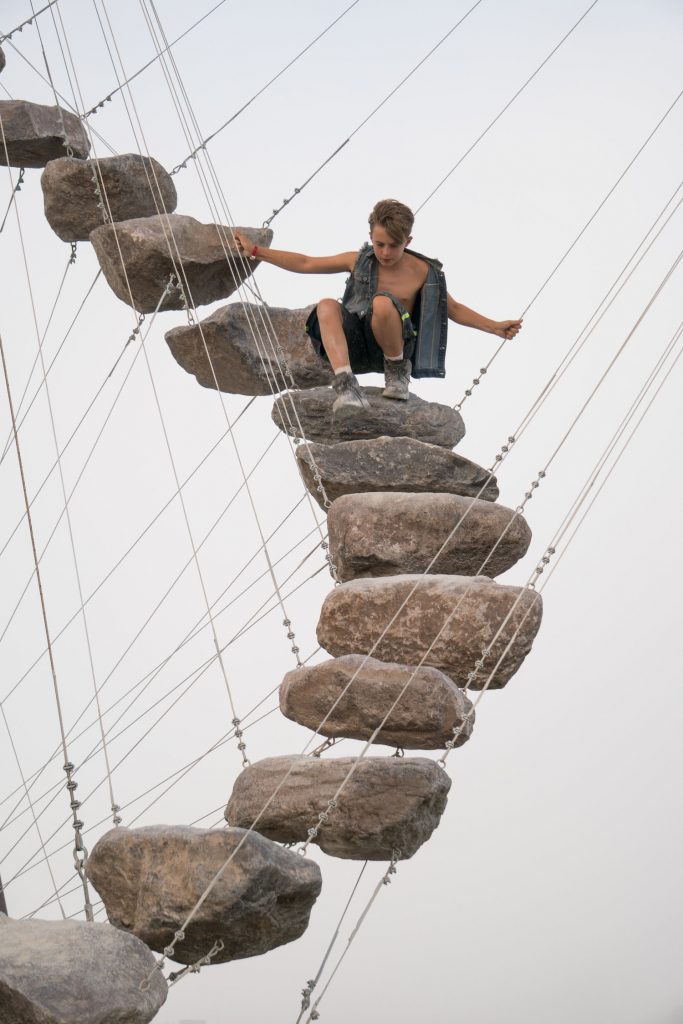
Stone 27 by Benjamin Langholz
Langholz discussed the technical aspects of the installation, including various structural models and drawings made by his team, with local rigging practitioners. The resulting installation was supported by a frame consisting of seven minimal steel columns, with three pairs of columns angled to fan outwards from the central pillar. Each stone was attached to four points in the structure, while at the base of the steel support, a pile of basalt rocks hid the structure inserted into the ground.
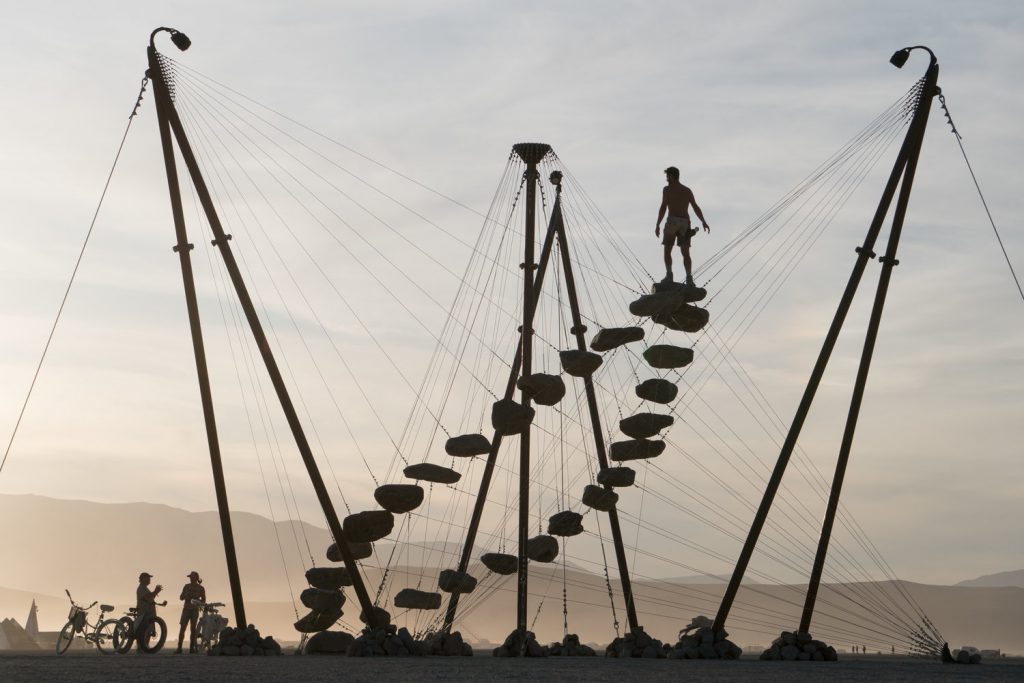
Stone 27 by Benjamin Langholz
The installation became a popular photograph opportunity, with many visitors posting an image of the climbers on his Instagram.